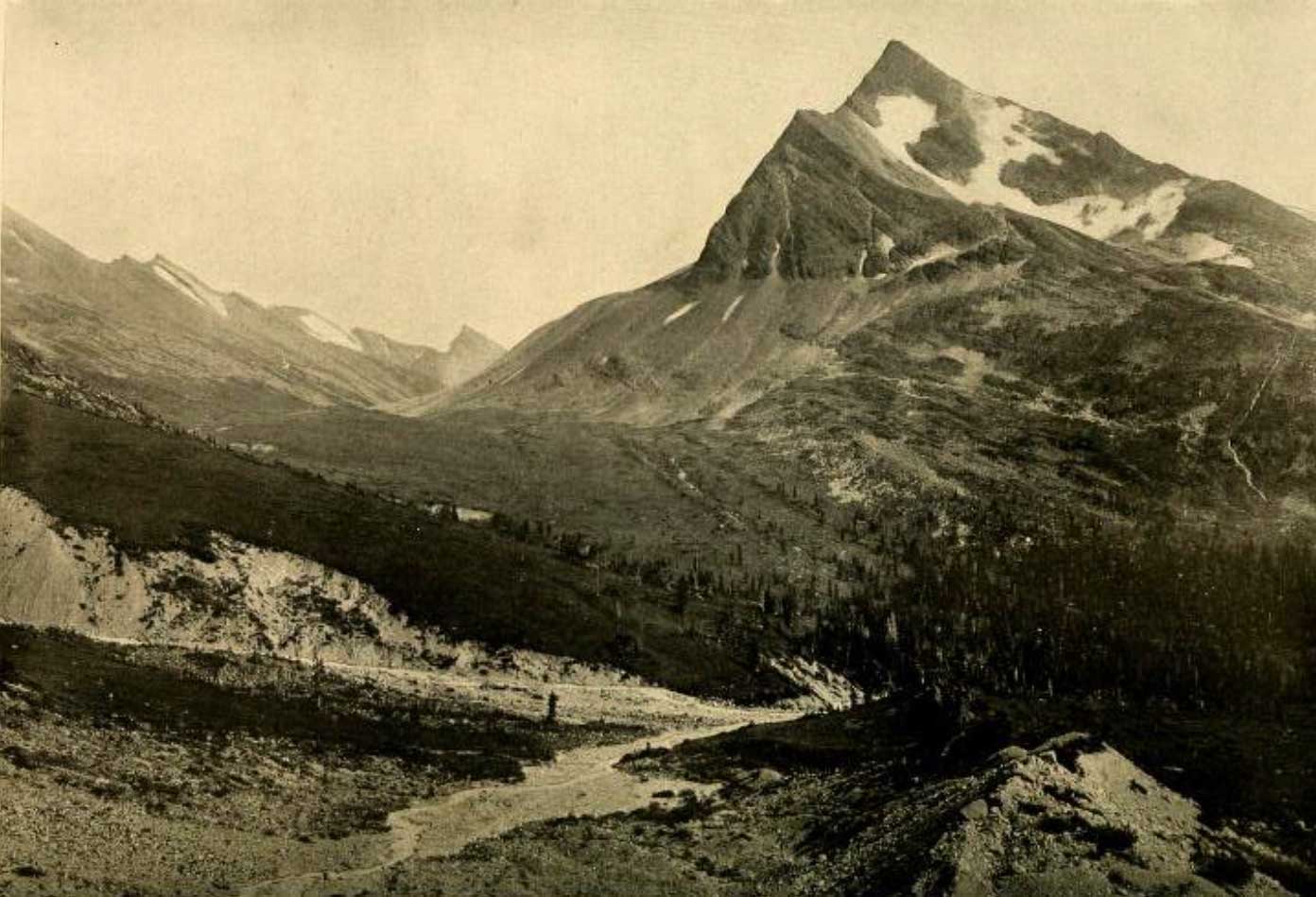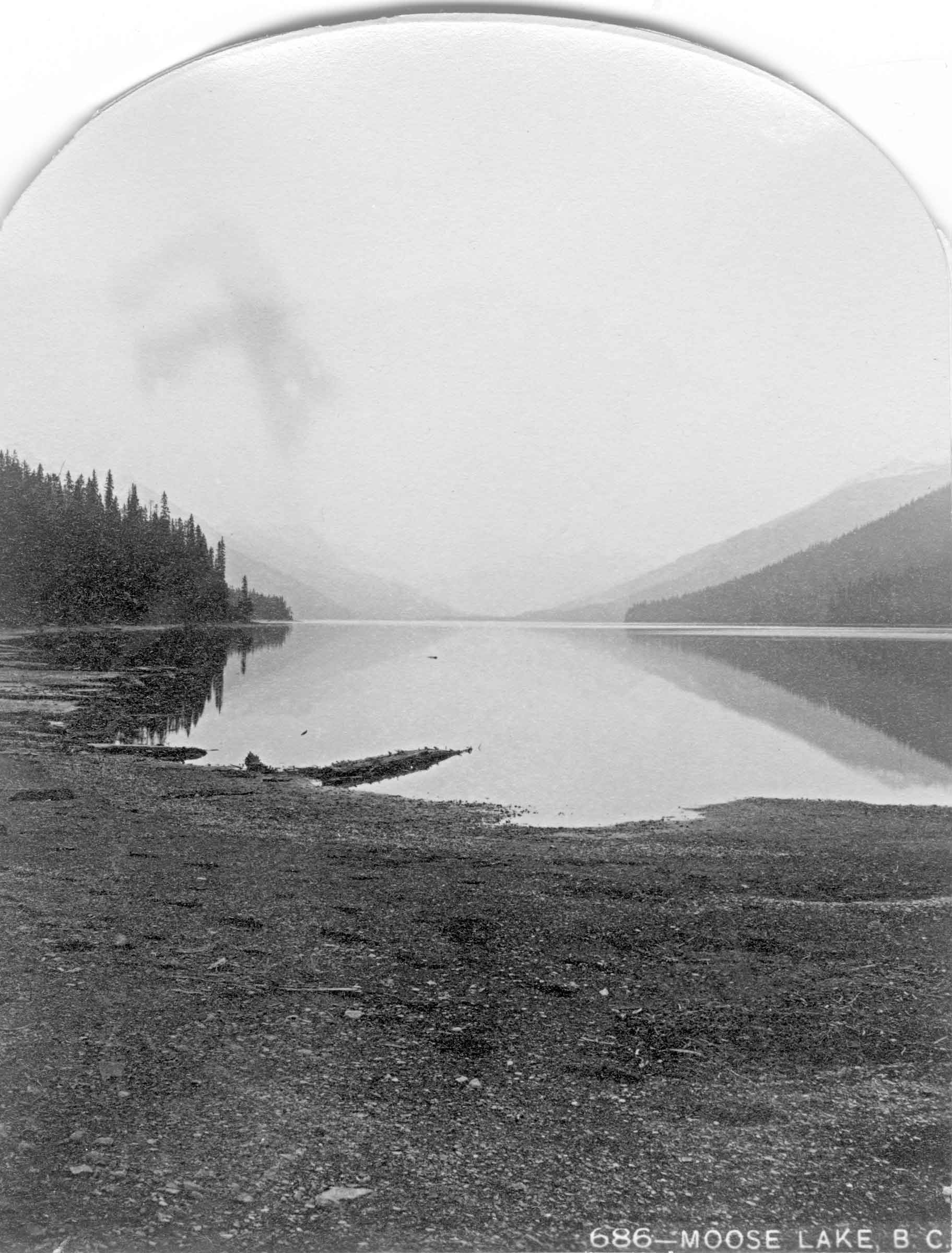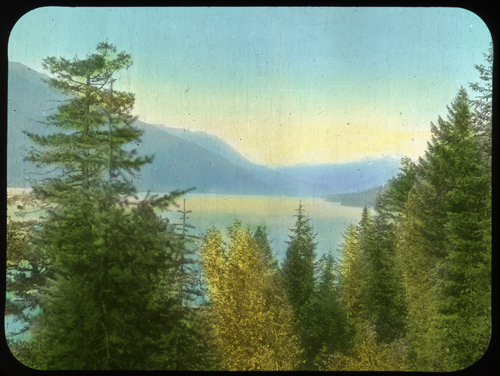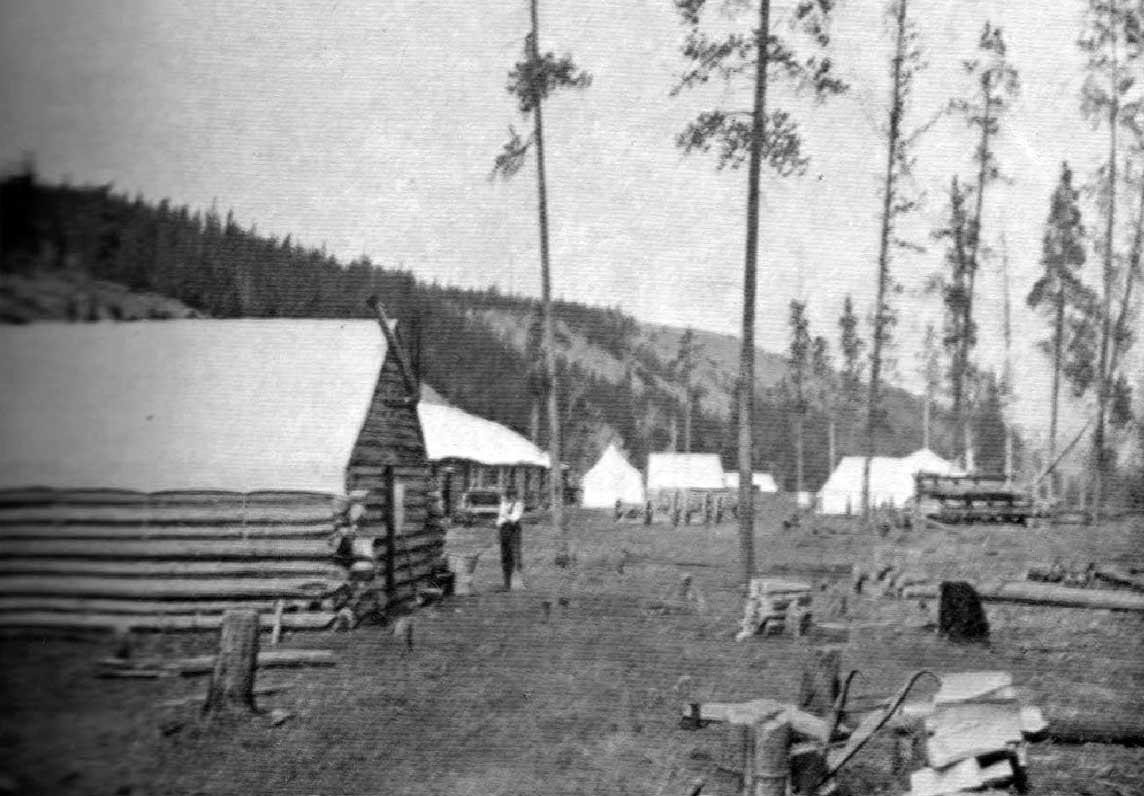Flows SE into Fraser River, E of Moose Lake
52.9167 N 118.8 W — Map 83D/15 — Google — GeoHack
Earliest known reference to this name is 1863 (Milton and Cheadle)
Name officially adopted in 1923
Official in BC – Canada
Trutch’s map of BC 1871
McEvoy’s map Yellowhead Pass 1900
Coleman’s map of Mount Robson 1910
Collie’s map Yellowhead Pass 1912
Wheeler’s map Mount Robson 1912
Boundary Commission Sheet 31 (surveyed in 1922)
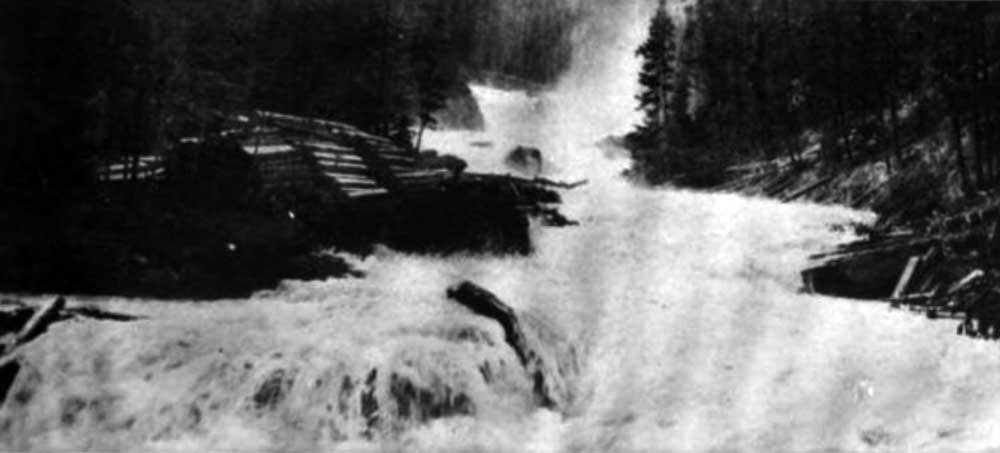
Driving ties on Moose River. This river-valley contains about twenty square miles of unalienated timber.
Report of the Minister of Lands for British Columbia for the yer ending December 31, 1912
Soon after we started, we came to Moose River, which was somewhat difficult to ford, for the water was high and rapid, pouring over the horses’ shoulders in the deepest part. Mr. O’B[ierne] lost nerve and steered badly, his horse lost its footing, and nearly took a voyage into the Fraser; the rider, however, gripped mane and saddle firmly, and both got ashore together, adding another hair’s-breadth escape to Mr. O’B.’s list.
- Simpson, George [1792–1860]. Fur trade and empire. George Simpson’s journal entitled Remarks connected with fur trade in consequence of a voyage from York Factory to Fort George and back to York Factory 1824-25. Frederick Merk, editor. Cambridge, Mass.: Harvard University Press, 1931. University of British Columbia Library
- Milton, William Wentworth Fitzwilliam [1839–1877], and Cheadle, Walter Butler [1835–1910]. The North-West Passage by Land. Being the narrative of an expedition from the Atlantic to the Pacific, undertaken with the view of exploring a route across the continent to British Columbia through British territory, by one of the northern passes in the Rocky Mountains. London: Cassell, Petter and Galpin, 1865, P. 263. Internet Archive
